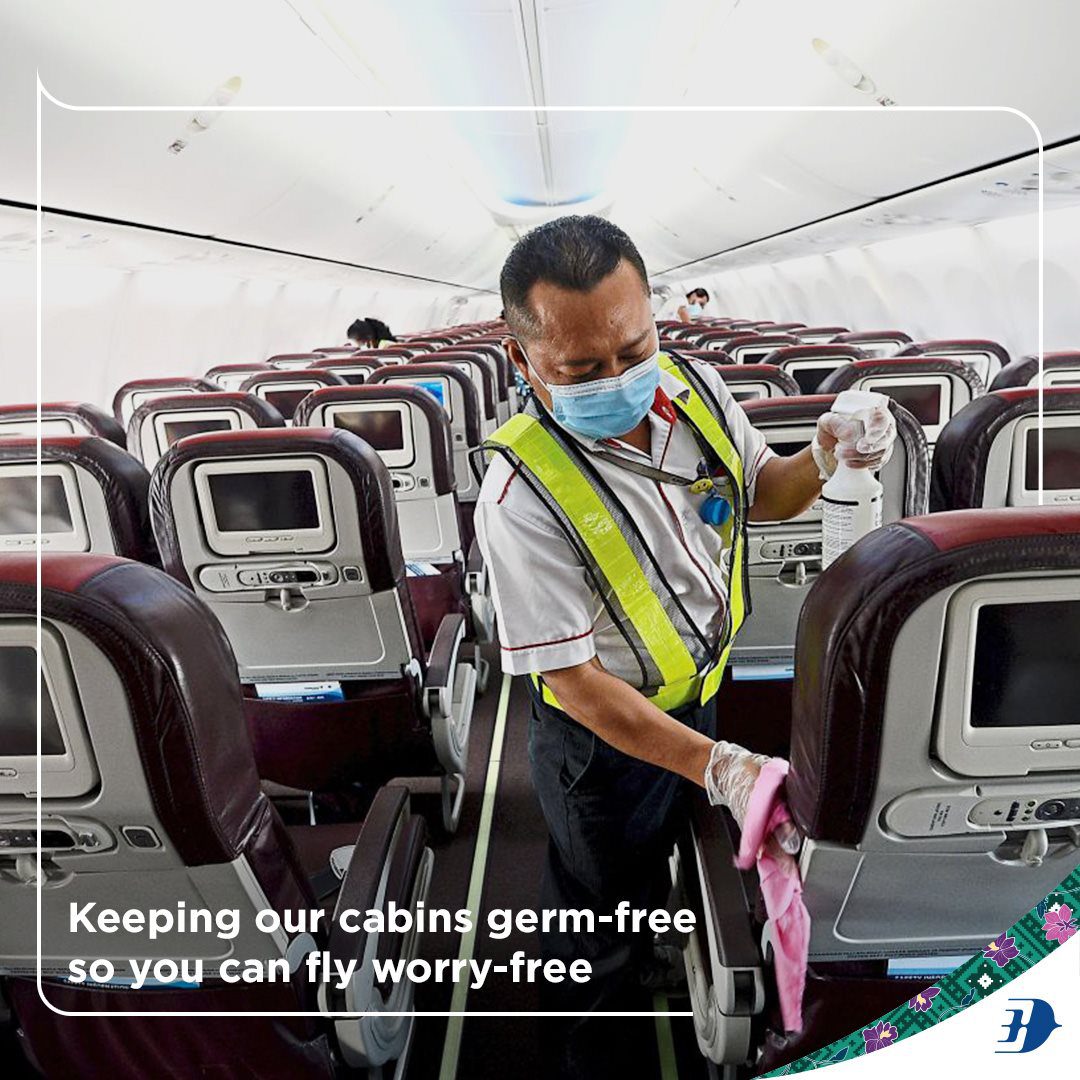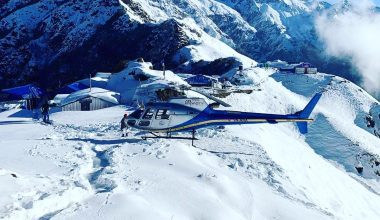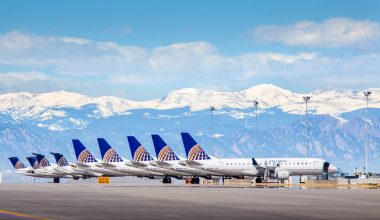Is flying safe right now? ‘Unprecedented’ is the word used frequently to describe the current COVID-19 crisis. This tiny virus has almost brought our globally connected world of technology and transportation to a grinding halt. This has caused many to ask what we are seeing unfold before our eyes is whether flying is safe right now amidst the pandemic?
Coronavirus pandemic has had a severe impact on the aviation industry, as it slammed it and brought its economy to its knees. Airlines’ finances and operations were thrashed out, while its value dropped nearly by 80% in 2020. The seat volume is a quarter of what it was in 2019. There’s a long journey ahead for airlines to recover; make up the ground first, and then consider flying passengers, revenues, and cargos. The removed capacity needs to be recovered too. In 2021, the air travel demand has slowly started picking up, unlike in 2020. Still, networks are inadequate, and routes are unprofitable for most airlines.
Read More: Pilot refused to fly the airplane because of the dirty oxygen masks in cockpit

But has safety increase with the surge in demand for flying? Isn’t it that the virus spreads among more people? Is flying safe right now? Before making any air ticker reservation, the air passengers should be clarified about the risks of flying amidst the pandemic breakout.
To start with the positive line, COVID-19 vaccines are on the way to prevent COVID transmission to others. Though it depends on which vaccine you get and whether you are fully vaccinated, vaccines are taken to get an extraordinary degree of protection against developing symptomatic diseases. Meanwhile, there are risks associated with the spread of virus droplets inside the aircraft. Flying in a confined room with the person you don’t know about (sometimes) and for a certain period of time (depends on which sector you are flying to) is an environment conducive to the chance of getting infected by the virus through transmission. So, it is important to know what measures are being taken to make flying safer than ever.
1. Aircraft’s airflow system
Aircraft, the modern means of transport, have equipped safety functions that can filter the air rapidly. Many airlines have installed the latest air filtration technology onboard (High-Efficiency Particulate Filter), which can supply pure air and capture bacteria, viruses, and airborne microbes. Such filters can capture 99.9% of the airborne virus. Aircraft can replace the air at a quick interval of time, 100% clear.
While the plane’s air supply and filtration procedure are effective, it doesn’t always guarantee that the virus won’t spread among passengers. It only takes droplets to transmit COVID by air as the virus is airborne now. The infected passenger’s coughing, sneezing, or his/her talking throws out droplets that will mix in the air and will invade your personal space. Since aircraft has a closed space, you can’t always rely on the aircraft’s airflow system even though they clean cabin air at about 90 seconds. The duration of flight and number of a passenger onboard plays a big role in the risk of COVID-19 spread. As you are exposed to other people for a period of time, the infection risk is still there.

2. Enhanced cleaning procedures
Precautionary kits are made available on aircraft all the time. The aircraft are cleaned, disinfected every time on a new flight to ensure extra protection to airplane crews and passengers.

3. Touchless travel
Touchless travel and automation system has been introduced by airlines with a view to making visible changes. Facial recognition technology, contactless fingerprint scan, and introduction of check-in through online portals like mobile apps and airline websites are there. But still, with strict health and safety protocols, the risk of infection of COVID-19 is alive through an exchange of travel documents in airports. However, physical fingerprints are replaced, a mitigating measure to ensure safe flying.
4. Mandatory health documents
Travel documents such as health declaration forms, certificates of COVID-19 vaccines, medical certificates are made compulsory by airlines. Many countries have made strict entry and transit requirements regarding the resume of the aviation industry. So, the chance of an infected person traveling by air is minimal, given the health tests and strict health regulations.
5. Short and long term strategies by airport
Airports as the home to aircraft are adopting several strategies to ensure social distancing and less human contact. Some of these include biometric technology, facial recognition, and removal of seating space at boarding gates. Every day, thousands of travelers go through the airports and plenty of people-to-people interaction. Not every passenger may require the safety precaution as others. A mistake by one person can prove to be heavy for others as well. The airport needs time and space control.
6. Mandatory masks and sanitation
Face masks in the airport and onboard policy by passengers and crews, sanitation of every aircraft’s internal parts like seats, sidewalls, lavatory, door, bathroom faucet, headrest, armrest, etc. The passengers should avoid touching their nose, mouth and touching the handles, sliders directly. Hand sanitizers, physical distancing measures should be made practicable. Highest vigilance system in the airport, use of thermal cameras to detect passenger’s body temperature, blocking of middle seats to ensure distancing, personal protective equipment for employees are some of the airline policies to make flying safe.

7. Modifies catering onboard
The traditional way of catering for the passenger may trigger the transmission of viruses among air passengers. The time limit for taking off the masks, reduced interaction between crew and passengers are executed to make catering simple and adhere to safety policy.
Looking at all these airline policies, one may assume the flight safety is back to normalcy. But not all airlines adhere to their aforementioned policies. Unblocking the middle seats while booking is up to the seating capacity is also seen. Even when middle seats are blocked, there’s hardly 6 feet distance between aisle and window seat.

Would the coronavirus be transmitted worldwide if air transport adopted this much precaution from before? As China is attributed to the spread of this deadly virus, would the Chinese people have been able, to this extent if they hadn’t flown?
There are no two opinions for flying to pose a threat of transmission, but the real question is, “Is flying safe now, given the mandatory rules and health policies?”
Although flying is a safe mode of transport than others, it’s not 100% safe. Even those fully vaccinated people are not completely safe. Flying amidst the COVID crisis needs to consider many variables.
Is flying safer on domestic or international flights?
No flight is safer until safety protocols, aircraft cleaning procedures, seating configuration, and flight duration are prioritized. More than paying attention to whether a domestic or international flight is, the passengers should focus on the destination they are traveling to (what’s its infection rate, health and safety facilities, precautionary measures, quarantine requirements, etc.) The longer the flight, the riskier the travel is, as there is more exposure, doors open, and more people using accessories, etc.

What does it mean to fly safely right now?
Currently, safety in flying is related to safety from infectious viruses. At present, the Delta virus is proved to be contagious twice the original virus and the most transmissible of all variants detected. So, to fly safely, the passengers must wear masks, avoid crowded areas, self-monitor for symptoms.
Every airline is trying its best to make air travel safe, comfortable. One must not make negligence on airport entry, walkthrough, and aircraft entrance. Passengers must face forward in the flight, as seat backs are the barriers to reduce the transmission forward or back. Those stranded in different parts of the country and those requiring immediate or urgent travel have no options other than flying. Don’t travel unless necessary. To sum up, as per the data provided by airlines, the transmission risk onboard the aircraft is low, given all those safety protocols. As vaccinations become more accessible to general people, masks are made compulsory, and crowds are avoided, the infection rate will minimize, and flying will return to its new normal safety. It is the responsibility of both passengers and airlines to make flying safe. Your actions will determine if flying is safe or not.
Overall, is flying safe?
Not only highlighting the pandemic crisis, if flying safe in overall? Yes, compared to the railroad, water transport, highway driving, aviation is safer. Although plane crashes and accidents grab the media attention and frighten us, these events aren’t frequent happenings.
How is flying safe?
1. Check and balance: A lot of skilled manpower like pilots, air traffic controllers, crews, etc., is involved in making an aircraft fly.
2. Adequate safety training: Getting a pilot license is not easy as getting a bike license. Pilots go through stressful training, complete flying hours.
3. Modern technologies: Today’s aircraft are equipped with modern technologies to ensure safety.
4. Country’s regulation: Even the country’s restrictions are imposed on flying for safe operation.
With the airline’s commitment to 0 accidents and incidents, the aviation industry is regularly cruising to the objective of safe flight take-off and landing.






